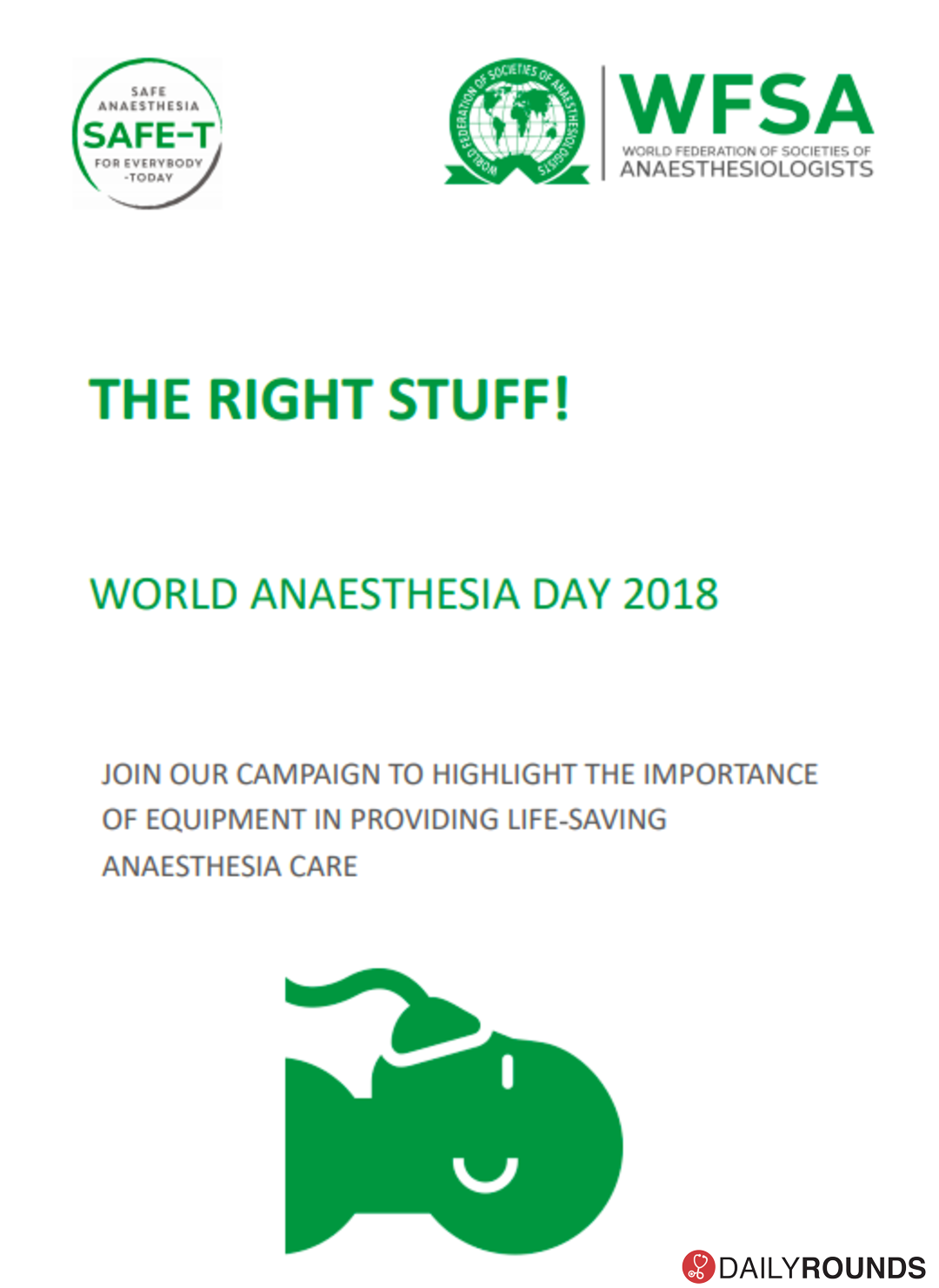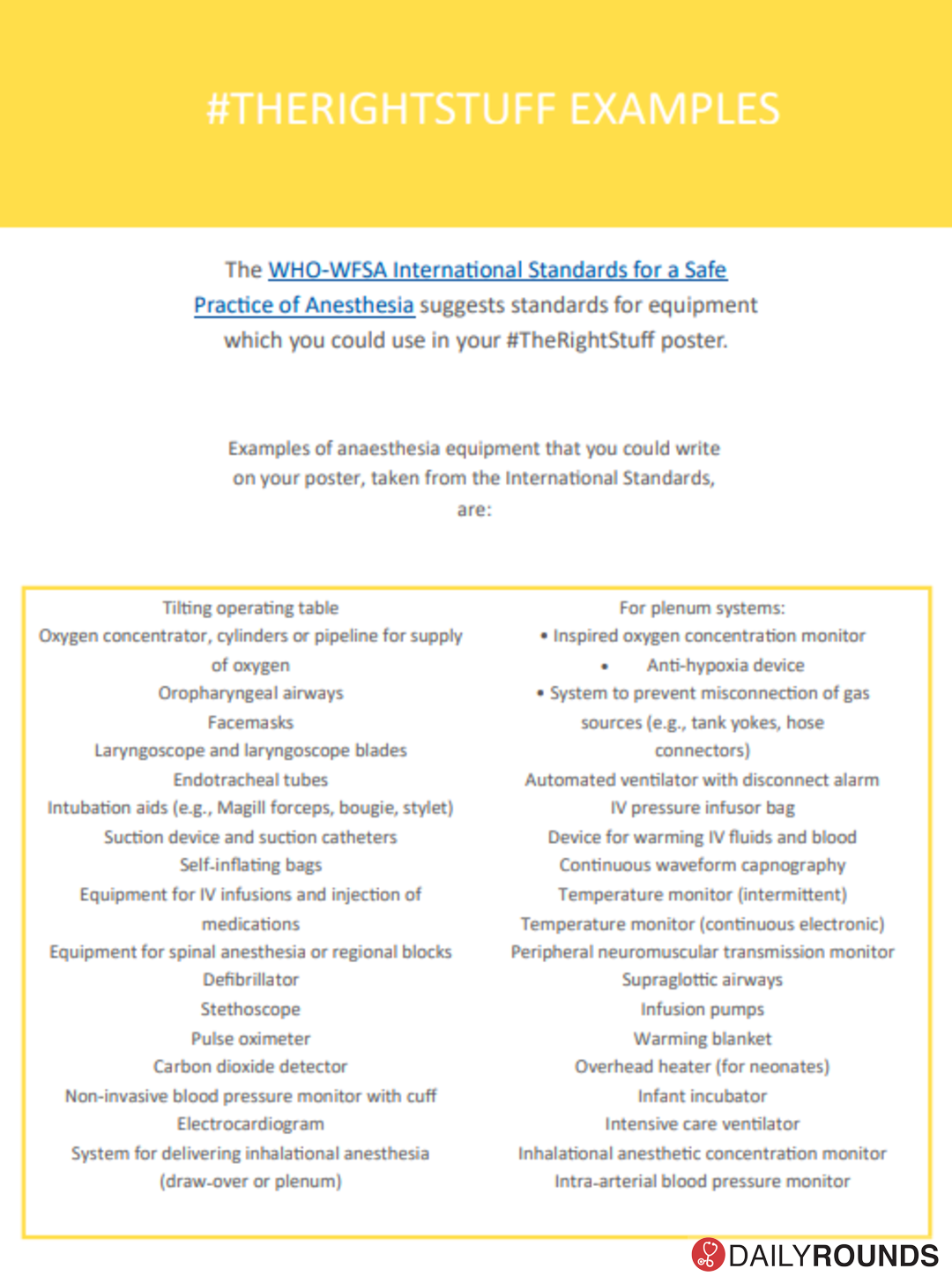October 16, 2018 — DailyRounds
World Anaesthesia Day, 16th October 2018: “The Right Stuff” campaign
 On October 16, 1846, an American dentist William Morton, used sulfuric ether as an anaesthetic for a surgery for the very first time and set the course for the development of modern anaesthesia as we know it. He administered it by inhalation to Edward Gilbert Abbott for the removal of a tumour in his neck and was performed by Boston’s leading surgeon John Collins Warren. The discovery made it possible for patients to obtain the benefits of surgical treatment without the pain associated with an operation.
On October 16, 1846, an American dentist William Morton, used sulfuric ether as an anaesthetic for a surgery for the very first time and set the course for the development of modern anaesthesia as we know it. He administered it by inhalation to Edward Gilbert Abbott for the removal of a tumour in his neck and was performed by Boston’s leading surgeon John Collins Warren. The discovery made it possible for patients to obtain the benefits of surgical treatment without the pain associated with an operation.
The 16 October, today is globally recognised as World Anaesthesia Day in respect of the importance of this event. For this year’s event, WFSA has launched “The Right Stuff” campaign.
We have used the standardized language of the WHO to denote three levels of the standard:
● HIGHLY RECOMMENDED
● RECOMMENDED
● SUGGESTED
(1) HIGHLY RECOMMENDED standards are the minimum expected standards. They are the functional equivalent of mandatory standards.
(2) RECOMMENDED standards and SUGGESTED standards should be practised when resources allow and if appropriate for the healthcare being provided.
(3) In any setting, the goal should be to practice to the highest possible standards.
(3) In some resource-poor settings, even HIGHLY RECOMMENDED (i.e., minimum expected standards) may not currently be met. In these settings, the provision of anaesthesia should be restricted to procedures that are absolutely essential for the immediate(emergency) saving of life or limb.
(5) If HIGHLY RECOMMENDED standards are not met, provision of anaesthesia for elective surgical procedures is unsafe and unacceptable. Every effort must be made by those responsible for the provision of health care in these settings to ensure that HIGHLY RECOMMENDED standards are met, as a matter of urgency.

This World Anaesthesia Day we would like your help in drawing attention to the vital role that equipment plays in providing safe anaesthesia by highlighting your favourite anaesthesia equipment.
This year, alongside the World Health Organisation, the WFSA published the WHO-WFSA
International Standards for a Safe Practice of Anaesthesia for the first time.
This year, alongside the World Health Organisation, the WFSA published the WHO-WFSA
International Standards for a Safe Practice of Anaesthesia for the first time.
References:
(3) https://www.wfsahq.org/world-anaesthesia-day-2018